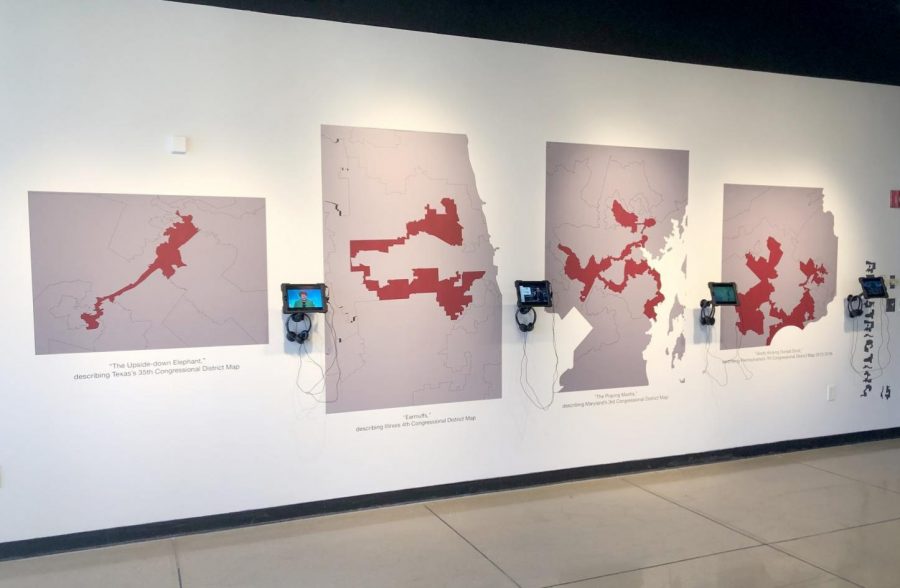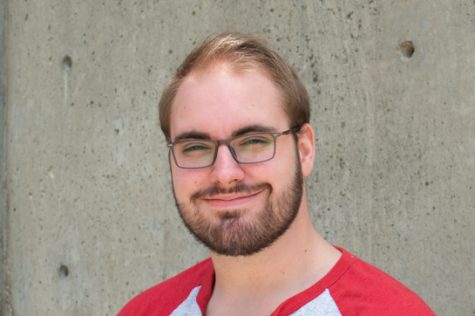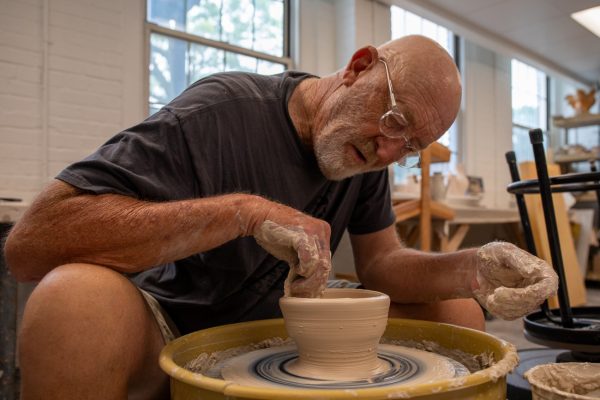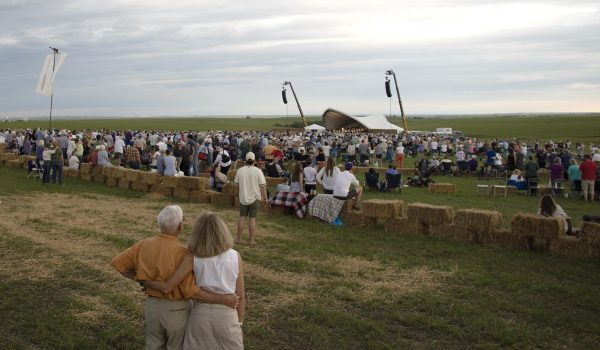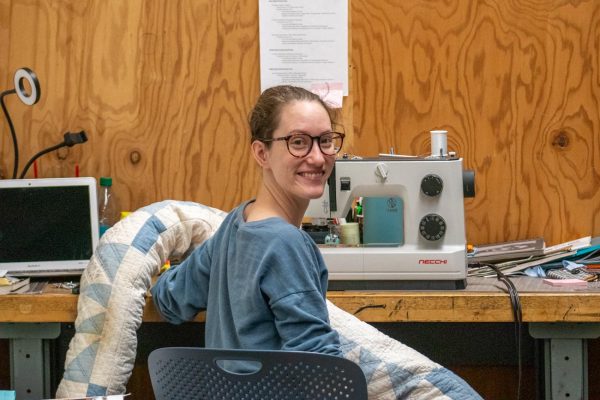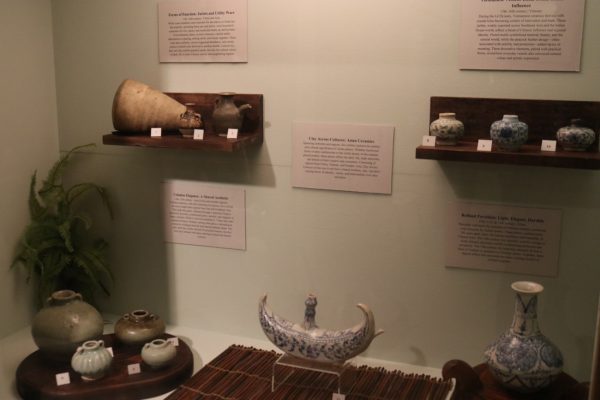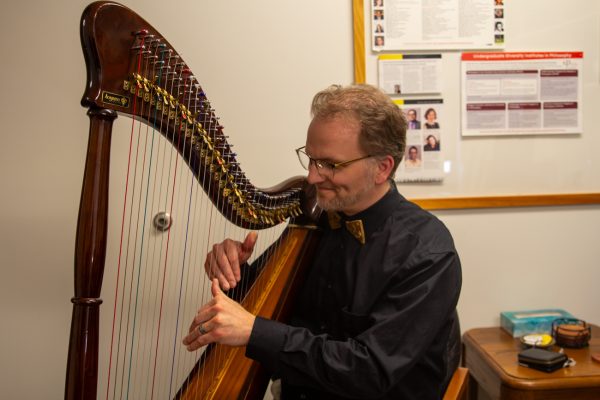Political science professor opens anti-gerrymandering exhibit at the Ulrich
Brian Amos’ exhibit, “Representation: Slaying the Gerrymander”, is on display on the first floor of the Ulrich Museum of Art.
The issue of gerrymandering, the redrawing of voting districts for political purposes, has found its way to the first floor of the Ulrich Art Museum in the “Solving for X” series’ latest exhibit, “Representation: Slaying the Gerrymander.”
Partisan politicians often use gerrymandering to disproportionately benefit one party, making it much easier for their preferred candidates to be elected and stay in office.
Brian Amos, creator of the exhibit and an assistant professor in Wichita State’s political science department, said he never expected an art museum to be interested in the gerrymandering maps he uses as visuals for lectures.
This is Amos’ second semester at WSU. His research has focused on redistricting and election administration.
“One of the things when I came in, [the department] asked, ‘Would you be interested in something like this?’ (an exhibit) And gerrymandering has nice images and maps, so I think they thought my research might be a good fit for it,” Amos said.
The exhibit consists of four blown-up state district maps with red highlighted districts that showcase the worst of gerrymandering. Along with the maps are three-minute videos describing why the districts look the way they do.
“One case we have up is actually trying to protect Hispanic communities in Chicago,” Amos said. “Normally, you know, they’re kind of disconnected from each other, so to connect them, they make this really weird looking district.”
Amos added that some districts are thought to be gerrymandered, but are in fact racial protection districts that are necessary due to the Voting Rights Act of 1965, a piece of legislation designed to prohibit racial discrimination in voting. These racial protection districts are meant to give a louder voice to minority communities and prevent the state from silencing them.
Across from the wall of gerrymandered districts is a video lecture from Amos that covers how automation could be used for redistricting to avoid gerrymandering or prove when a district is gerrymandered.
With redistricting happening next year, Amos said it’s something people need to be paying more attention to.
“I spend all day thinking about and working on it, so I think it’s very important. But when you do tell people about it — like all the politicians get to draw their own districts,” Amos said. “I think people very quickly understand that this is problematic and that maybe there should be controls on this in some states.”



